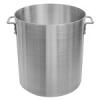Hi all,
I've just been speaking on the phone to a member of the technical department of a dairy supplier about an issue with some double cream. This product in particular has been coming in at around 8-9°C for the last couple of weeks and we've had to constantly dig around to try and find an area below 8°C (i.e 7.7) in order to accept the product as we always need it. Their milk and whipping cream are coming in at approx 6°C which is fine.
When I asked, he basically explained that due to high demand and low supply the product is being packed and loaded straight onto vehicles without being chilled down in storage, unlike all their other products that they are able to store at 1-3°C for a day or 2 before sending out. They have agreed to contact us before every delivery of double cream to inform us and find out whether we're willing to accept it or not but I guess my question is this:
Is it legal and safe to accept the product now we know what the reason behind the abnormally high temperatures? I should have asked him this on the phone but in my excitement at getting an explanation I forgot to ask!
Hope this all makes sense to everyone. Any input would be gratefully received.
Andy
















